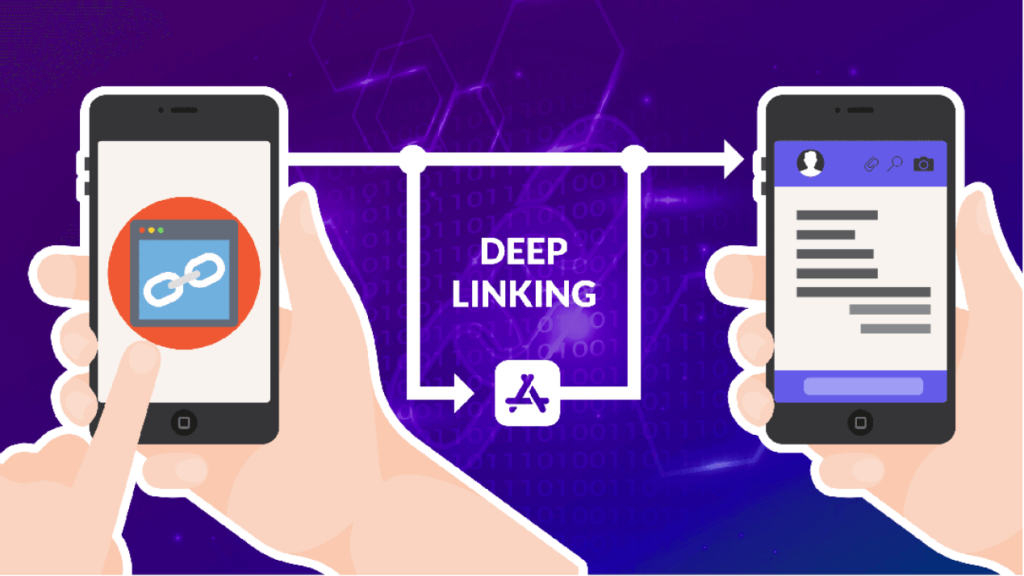
What is Deep Linking?
Deep linking is a technique in web development and mobile app linking that involves creating a hyperlink that points directly to a specific page or content within a website or mobile application, rather than just the homepage or main screen. It allows users to be directed to a particular section or location within an app or website, enhancing the overall user experience by providing more targeted and relevant information. Deep linking is often used to improve navigation, streamline user interactions, and facilitate seamless transitions within digital platforms.
Why is Deep Linking Important?
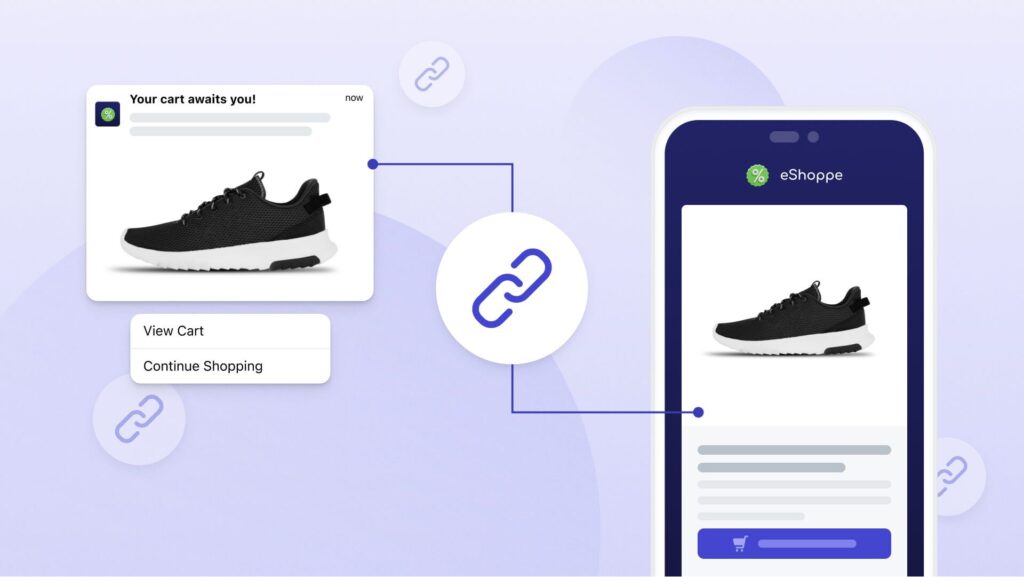
Deep linking is important for providing a better user experience, improving navigation, facilitating targeted marketing efforts, enhancing app engagement, and optimizing content visibility for search engines.
1. Enhanced User Experience: Deep linking allows users to directly access specific content or features within an app or website, providing a more seamless and efficient user experience. Users can skip unnecessary steps and quickly find what they’re looking for.
2. Improved Navigation: By linking directly to relevant content, deep linking improves navigation within digital platforms. It helps users discover specific information without having to navigate through multiple pages or screens.
3. Effective Marketing: Deep linking is valuable for marketing campaigns, allowing marketers to direct users to specific promotions, products, or personalized content. This targeted approach can increase engagement and conversion rates.
4. App Engagement: In mobile app development, deep linking is crucial for engaging users with specific app content. It enables targeted notifications and allows users to open the app directly to a particular screen or feature.
5. SEO Benefits: Deep linking can contribute to better search engine optimization (SEO) by directing search engine crawlers to specific, relevant content. This can improve the visibility of specific pages or features in search results.
6. App Retention: For mobile apps, deep linking can enhance user retention by re-engaging users with specific content or features. For example, sending users directly to a personalized section of an app can encourage regular usage.
7. Campaign Tracking: Deep links can include parameters that help track the success of marketing campaigns. Marketers can analyze which campaigns or channels are driving the most engagement and adjust their strategies accordingly.
Deep Linking and Mobile Advertising
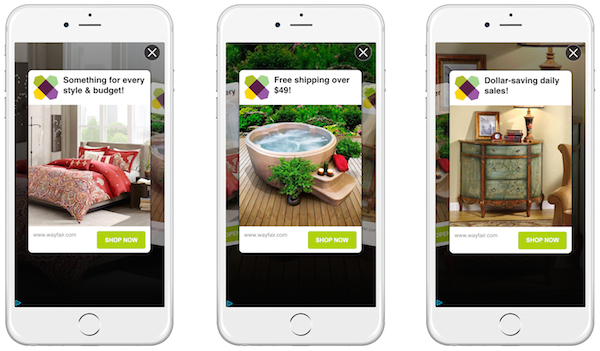
Deep linking is relevant in the context of mobile advertising. Mobile deep linking involves creating links that lead users not only to a mobile app but also to specific content or pages within that app. This strategy is particularly beneficial for mobile advertising for several reasons:
- Improved User Experience: Deep links in mobile ads can direct users to a specific section or feature within a mobile app, providing a more seamless and relevant experience.
- App Engagement: Mobile deep linking helps advertisers encourage users to engage with specific content or promotions within their app, increasing overall user interaction.
- Personalization: Advertisers can create personalized deep links that lead users to content based on their preferences, enhancing the chances of conversion.
- Retargeting: Deep links are valuable for retargeting campaigns, guiding users who have interacted with an ad back to the specific content they showed interest in.
- Measurable Campaigns: By using deep links in mobile advertising, marketers can track the success of specific campaigns, understanding which promotions or products resonate most with their audience.
Traditional VS Deferred Deep Links:
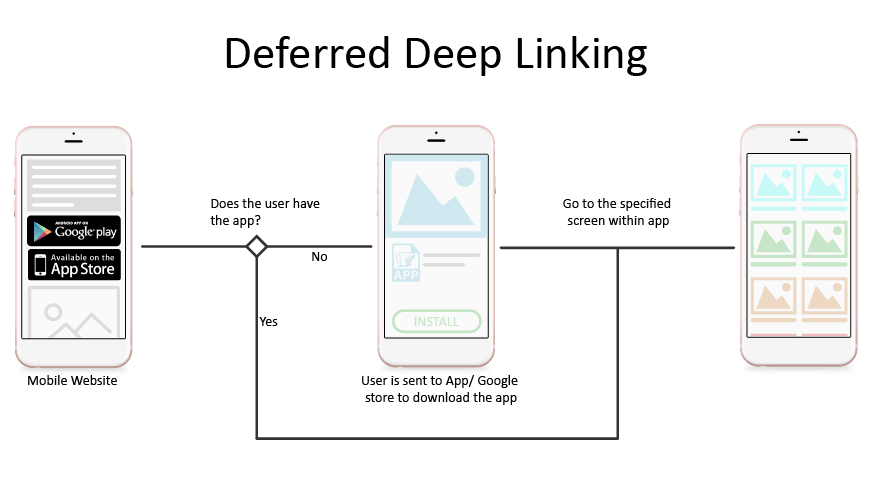
There are two main types of deep links in the context of mobile advertising:
• Traditional Deep Links: Direct users to a specific location within an app if it’s already installed, or to the app store if it’s not installed.
• Deferred Deep Links: If a user doesn’t have the app installed, deferred deep links can direct them to the specific content after they install the app.
Mobile deep linking enhances the effectiveness of mobile advertising by providing a more targeted and streamlined user experience, ultimately contributing to increased engagement and conversion rates.
Deep Link VS Hyperlink
A hyperlink is a general term that refers to a clickable link or element on a webpage that, when activated, takes the user to another location, either within the same page, to another page on the same website, or to an entirely different website.
On the other hand, a deep link is a specific type of hyperlink that directs users to a particular page or content deep within a website or mobile application, bypassing the homepage or main screen. Deep linking is more targeted, providing a direct connection to specific content or features.
In summary, while a hyperlink is a broad term encompassing any clickable link, a deep link is a specific type of hyperlink designed to take users directly to a specific location within a digital platform.
What is Deep Linking (SEO)?

It seems there might be a slight typo in your question. If you meant “deep linking SEO,” let me provide an explanation:
Deep linking SEO refers to the practice of incorporating deep links within a website or mobile app to improve search engine optimization (SEO). Instead of solely linking to the homepage, deep linking involves linking to specific pages, content, or features within the site. This strategy can enhance the visibility of specific content in search engine results, making it more accessible to users and search engine crawlers.
Benefits of Deep Linking for SEO Include:
Content Visibility: Directing users and search engines to specific content improves the chances of that content being indexed and ranked in search results.
Enhanced User Experience: Users are more likely to find relevant information quickly, leading to a positive user experience and potentially longer site visits.
Targeted Keywords: Deep linking allows you to use specific anchor text and keywords related to the linked content, contributing to better SEO for those terms.
Internal Link Structure: Incorporating deep links helps establish a well-structured internal linking system, which is a factor considered by search engines for ranking purposes.
Reduced Bounce Rate: By guiding users to relevant content, deep linking can help reduce bounce rates, indicating to search engines that visitors find value in the content.
It’s important to use deep linking judiciously, ensuring that the linked content is relevant, valuable, and aligns with SEO best practices. This approach contributes to a more organized and user-friendly website structure, positively impacting SEO efforts.
How to Integrate Deep Linking in your Digital Marketing Strategy?
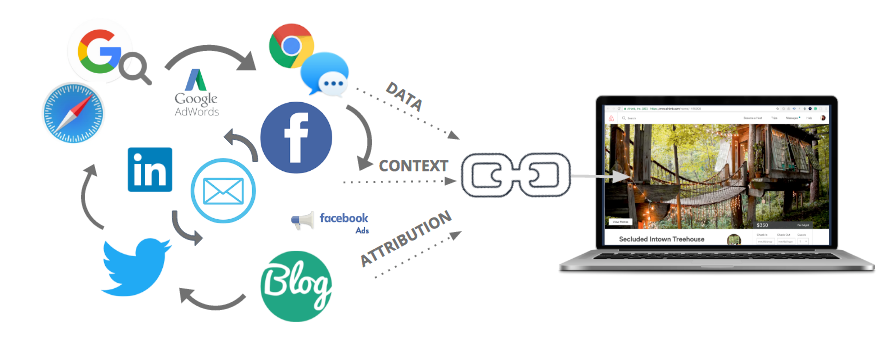
Integrating deep linking into your digital marketing strategy involves thoughtful planning and implementation. Here are steps to help you integrate deep linking effectively:
1. Define Objectives:
Clearly define your marketing objectives. Identify specific content, features, or campaigns you want to promote using deep links.
2. Understand Your Audience:
Understand your target audience and their preferences. Tailor deep links to lead users to content or features that align with their interests.
3. Create Deep Links:
Generate deep links that point directly to the desired content within your website or app. Ensure the links are trackable for analytics purposes.
4. Utilize Campaign-Specific Deep Links:
Create deep links for specific marketing campaigns. This allows you to measure the success of individual campaigns and tailor content accordingly.
5. Leverage Social Media:
Share deep links on social media platforms to direct users to specific promotions, products, or personalized content.
6. Incorporate into Email Marketing:
Include deep links in your email campaigns. Direct recipients to targeted content, offers, or product pages for a more personalized experience.
7. Optimize for SEO:
Optimize deep links for search engines. Ensure that the linked content is relevant, and use descriptive anchor text to improve SEO.
8. Implement Retargeting:
Use deep links in retargeting campaigns. Direct users who have shown interest in specific products or content back to those specific pages.
9. Track and Analyze Performance:
Implement analytics tools to track the performance of your deep links. Analyze click-through rates, conversions, and user behavior to refine your strategy.
10. Personalize User Journeys:
Leverage deep links to personalize user journeys. For example, direct users to personalized landing pages based on their preferences or previous interactions.
11. Mobile App Integration:
If you have a mobile app, implement deep links for app content. Direct users to specific screens or features within the app for a smoother experience.
12. Stay Updated with Deep Linking Standards:
Stay informed about deep linking standards and best practices. Technology evolves, and staying updated ensures your strategy remains effective.